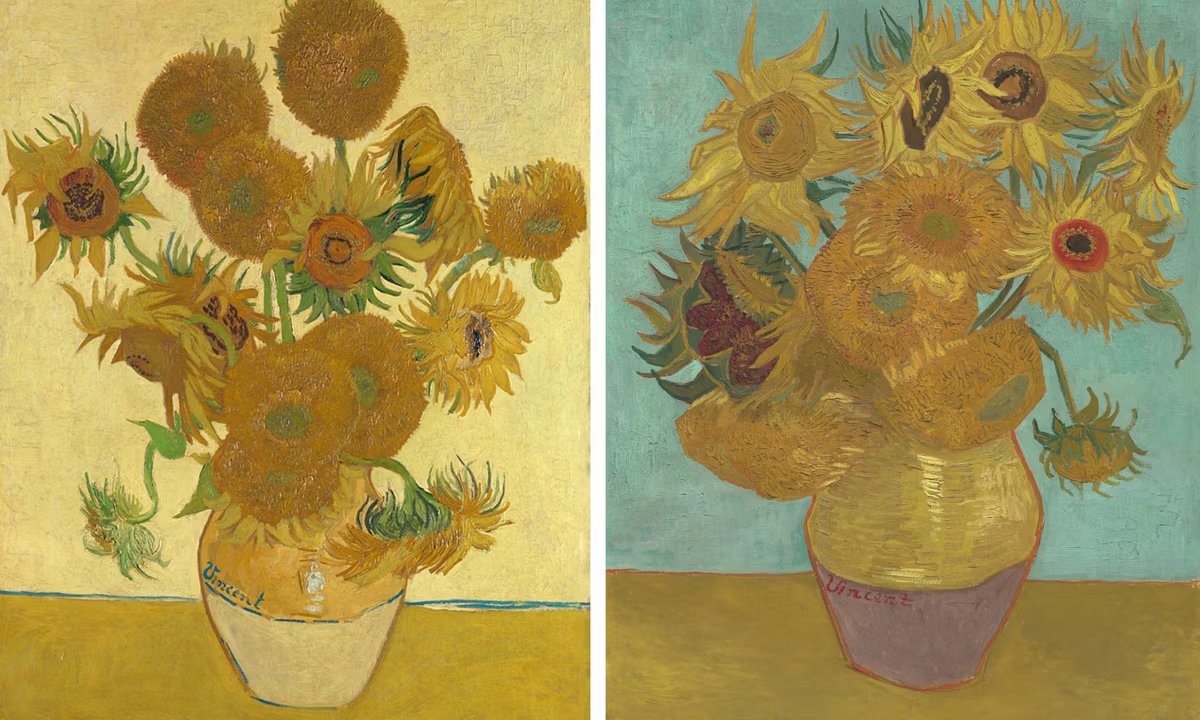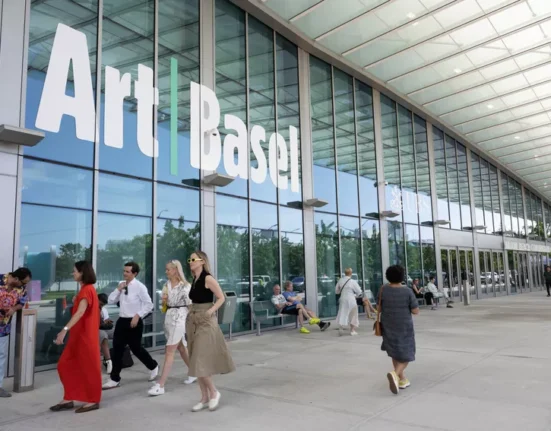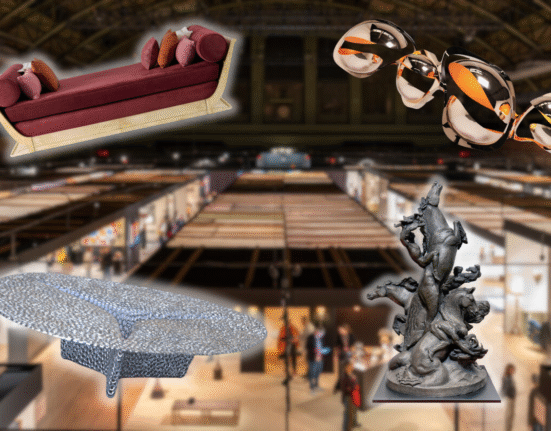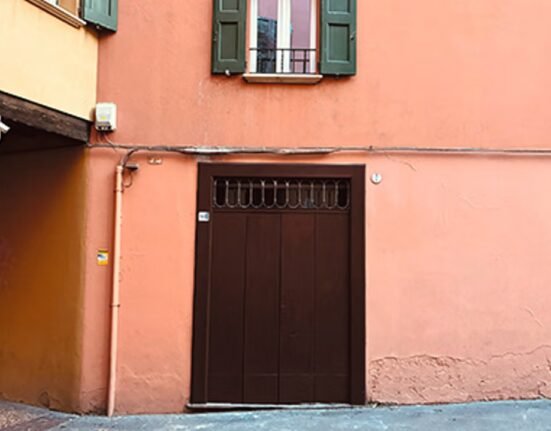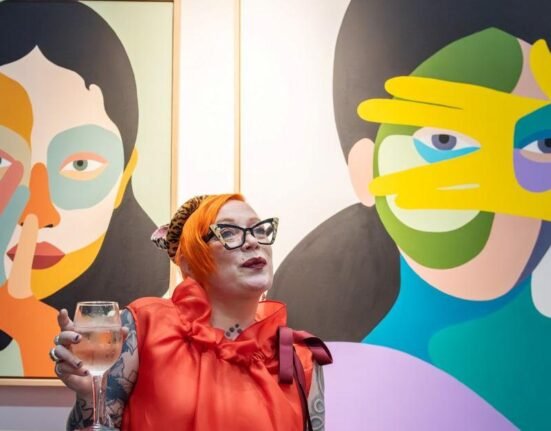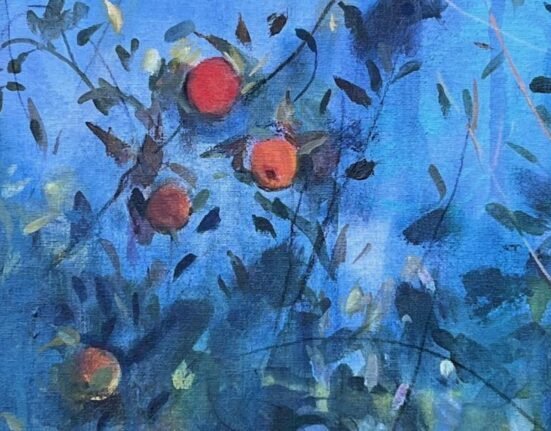Although not yet publicly announced, The Art Newspaper can reveal that the Philadelphia Art Museum will next year hold an exhibition entitled Van Gogh’s Sunflowers: A Symphony in Blue and Yellow (6 June-11 October 2026). According to a museum spokesperson, the show “will bring together two Sunflower paintings, considering how the artist used colour and brushwork to different expressive effects”.
The Philadelphia museum has its own Sunflowers (January 1889), one with a turquoise background. The curator’s coup, however, is to secure the loan of the greatest of the Arles Sunflowers, the original version with a yellow background (August 1888), which is at London’s National Gallery. Since its acquisition in 1924, the London painting has only gone on loan abroad four times, but will now make its way to the US next year.
The Philadelphia Sunflowers was previously lent to the National Gallery’s own blockbuster exhibition, Van Gogh: Poets & Lovers (14 September 2024-19 January 2025), marking the first time that the Philadelphia museum had lent the picture since its acquisition in 1963. London’s reciprocal loan to Philadelphia is therefore a recognition of their recent generosity.
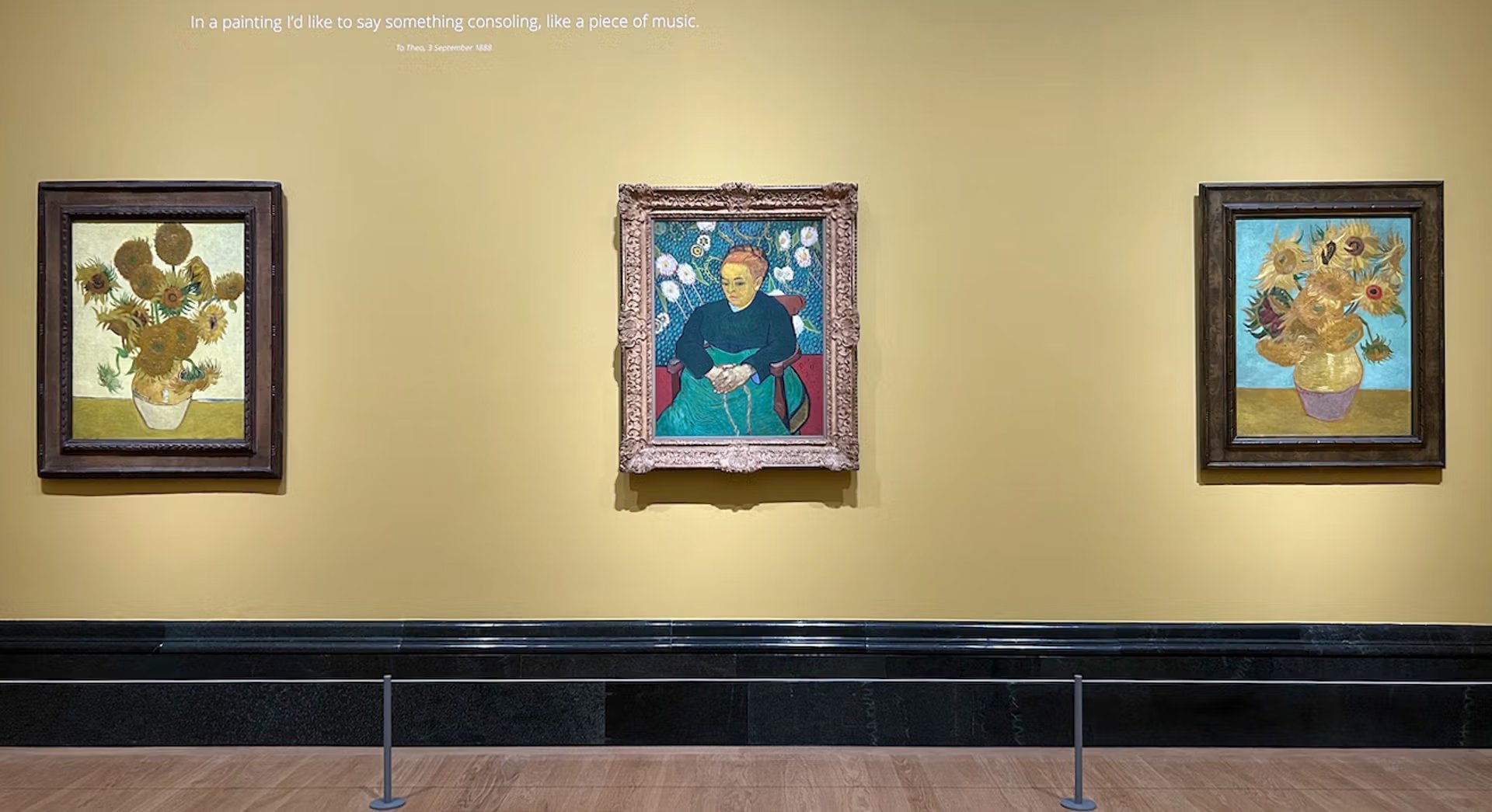
Installation photograph of the National Gallery’s exhibition Van Gogh: Poets & Lovers (2024), with the London (yellow) and Philadelphia (turquoise) Sunflowers, on either side of La Berceuse (January 1889, Museum of Fine Arts, Boston)
The Art Newspaper
At the London show, the two Sunflowers paintings were hung in an arrangement which Van Gogh himself had envisaged: in a “triptych” with La Berceuse (The Lullaby) (January 1889), a portrait of his friend Augustine Roulin holding the cord of a rocking cradle. Vincent once made a sketch of the triptych in a letter to his brother Theo, though it has disappeared. However, a 1914 photograph of the drawing survives.

Van Gogh’s sketch of the triptych, in his letter to Theo of 23 May 1889
J. Van Gogh-Bonger, Vincent van Gogh: Brieven aan zijn Broeder, Amsterdam, 1914, vol. iii, p. 318
From the Yellow House to Philadelphia
In August 1888, in the Yellow House in Arles, Van Gogh painted four Sunflowers still lifes. To see how the Philadelphia and London versions fit into Van Gogh’s work, a bit of background is needed.
Van Gogh initially made a Sunflowers with three blooms (now in a private collection) and another with six blooms (destroyed in Japan during the Second World War). But the two famous ones had 14 blooms on a turquoise-blue background (now at the Neue Pinakothek, Munich) and 15 blooms on a yellow background (National Gallery, London).
A few months later Van Gogh made copies of the most successful pair: two copies with a yellow background (Van Gogh Museum, Amsterdam and Sompo Museum of Art, Tokyo) and one with a turquoise background (Philadelphia).
Vincent sent Philadelphia’s turquoise Sunflowers to Theo in Paris in April 1889. This picture had been intended for Gauguin, although it remains unclear whether it actually reached him.
What is certain is that in 1895 the same Sunflowers was bought for the equivalent of $80 by Count Antoine de La Rochefoucauld, an avant-garde patron. He kept it until 1928.
The Philadelphia collector and artist Carroll Tyson then purchased the Sunflowers through the Paris dealer Paul Rosenberg. He paid the equivalent of $45,000. The picture would now be worth several hundred million dollars.
Tyson appears to have had an ambivalent attitude towards the purchase. His son-in-law Louis Madeira recalled that Tyson carefully positioned the Sunflowers behind his dining chair, so that he would not have to look at it during meals. Tyson was said to feel that the Van Gogh was “crude and untutored”. It may have seemed too modern for his slightly more traditional taste—or possibly the anecdote was simply a family joke.
When Tyson died in 1956, the turquoise Sunflowers passed to his wife Helen. On her death in 1963 she bequeathed 22 of their paintings to the Philadelphia museum, including the Van Gogh. It has long been the most popular picture in the gallery.
Framing a masterpiece
Just before Philadelphia’s Sunflowers was sent to the London exhibition in 2024 it was reframed, probably for the first time in a century. It would soon be hanging in close proximity to the National Gallery’s Sunflowers and curators at the two institutions realised that their incompatible frames would be jarring for visitors.
Philadelphia’s painting was in an ornate gilded frame, whereas the London picture had been put into a simpler frame in 1999. This plainer London frame, made in the 17th century in Italy, looks its age, with numerous old woodworm holes.
Jennifer Thompson, the Philadelphia museum’s curator, therefore decided that it would be better to make a frame similar to the National Gallery’s. This was done, but there was a subtle change: the new frame was deliberately not an exact copy of the London one, although at first glance it looks the same.
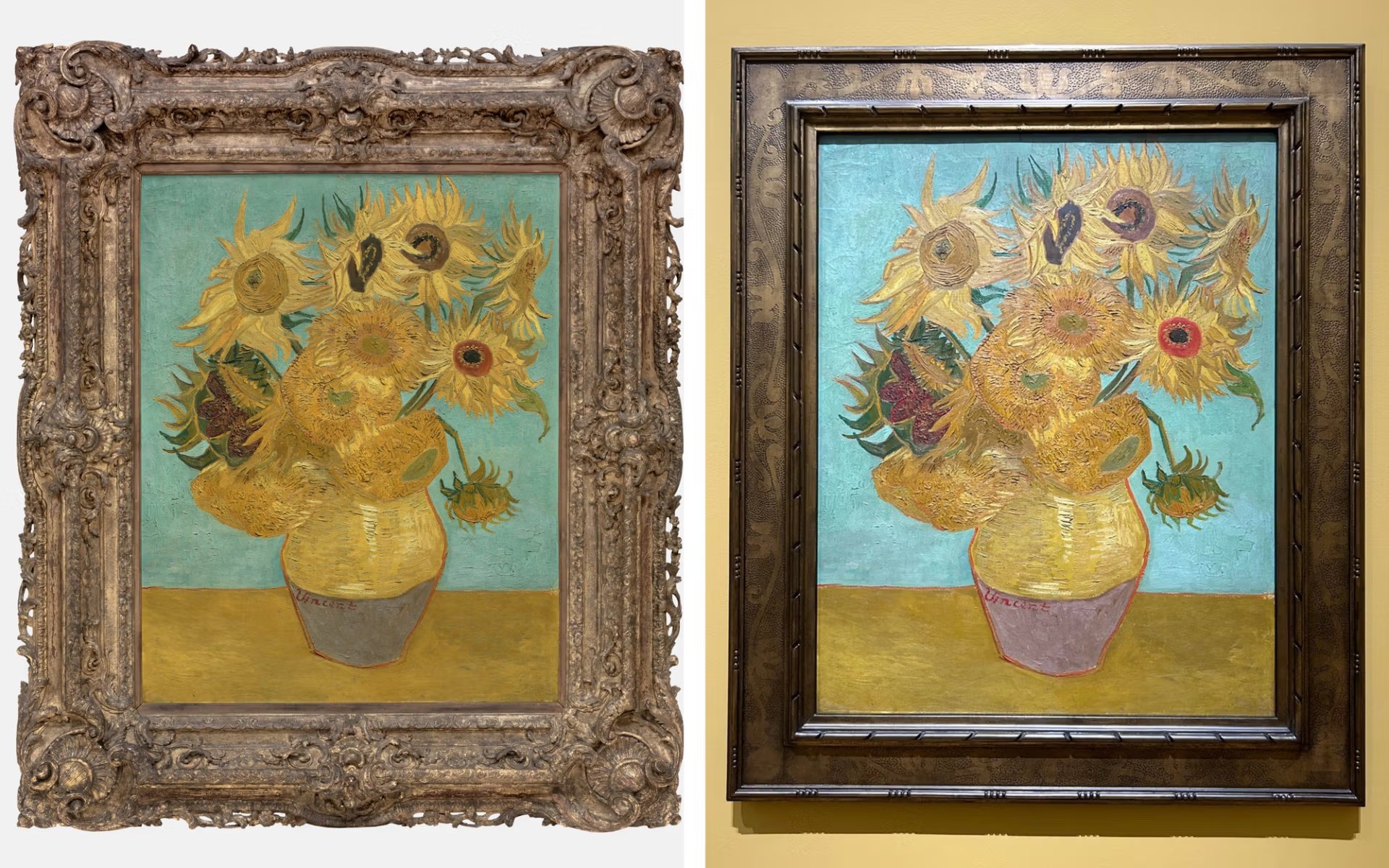
Philadelphia’s Sunflowers in its museum frame until 2024 and its new, simpler frame
Philadelphia Art Museum
When the Philadelphia Sunflowers was hung in the National Gallery exhibition in 2024-25, it was realised that the new frame showed off the painting more effectively—and it was therefore retained when the picture was returned to America last January. This means that when Van Gogh’s Sunflowers: A Symphony in Blue and Yellow opens at the Philadelphia Art Museum in June 2026, the two Sunflowers will look their best.
News of the exhibition comes, quite coincidentally, in a week which has seen the ousting of the Philadelphia Art Museum’s director, Sacha Suda. This was reportedly linked to her failure to consult the museum’s trustees over a controversial name change from the Philadelphia Museum of Art. The Sunflowers show, however, is in the museum’s exhibition schedule and should not be affected by her departure.
As for the title of the coming show, it derives from a letter from Vincent to Theo of 21-22 August 1888. He wrote that he hoped his Sunflowers series would be “a symphony in blue and yellow”. Van Gogh loved complementary colours, such as blue and yellow, which “sing” when next to each other. Visitors to the Philadelphia exhibition will have the very unusual privilege of enjoying the effect.

Extract from Vincent’s letter to Theo, 21-22 August 1888, in which he refers to “une symfonie en bleu et jaune” (a symphony in blue and yellow)
Van Gogh Museum, Amsterdam (Vincent van Gogh Foundation)
Martin Bailey is a leading Van Gogh specialist and special correspondent for The Art Newspaper. He has curated exhibitions at the Barbican Art Gallery, Compton Verney/National Gallery of Scotland and Tate Britain.

Martin Bailey’s recent Van Gogh books
Martin has written a number of bestselling books on Van Gogh’s years in France: The Sunflowers Are Mine: The Story of Van Gogh’s Masterpiece (Frances Lincoln 2013, UK and US), Studio of the South: Van Gogh in Provence (Frances Lincoln 2016, UK and US), Starry Night: Van Gogh at the Asylum (White Lion Publishing 2018, UK and US) and Van Gogh’s Finale: Auvers and the Artist’s Rise to Fame (Frances Lincoln 2021, UK and US). The Sunflowers are Mine (2024, UK and US) and Van Gogh’s Finale (2024, UK and US) are also now available in a more compact paperback format.
His other recent books include Living with Vincent van Gogh: The Homes & Landscapes that shaped the Artist (White Lion Publishing 2019, UK and US), which provides an overview of the artist’s life. The Illustrated Provence Letters of Van Gogh has been reissued (Batsford 2021, UK and US). My Friend Van Gogh/Emile Bernard provides the first English translation of Bernard’s writings on Van Gogh (David Zwirner Books 2023, UKand US).
To contact Martin Bailey, please email vangogh@theartnewspaper.com
Please note that he does not undertake authentications.

